SIZE GRIP AND COMFORT:
Your grip style, and hand size will heavily influence what mouse you should buy, so it is better to know both first hand. For an instance, my hand measures at 7 inches x 3.5 inches (LxW). This puts my hands on the small to medium size category. My style is finger-tip grip, so I would generally look for a mouse with a small to medium foot print.
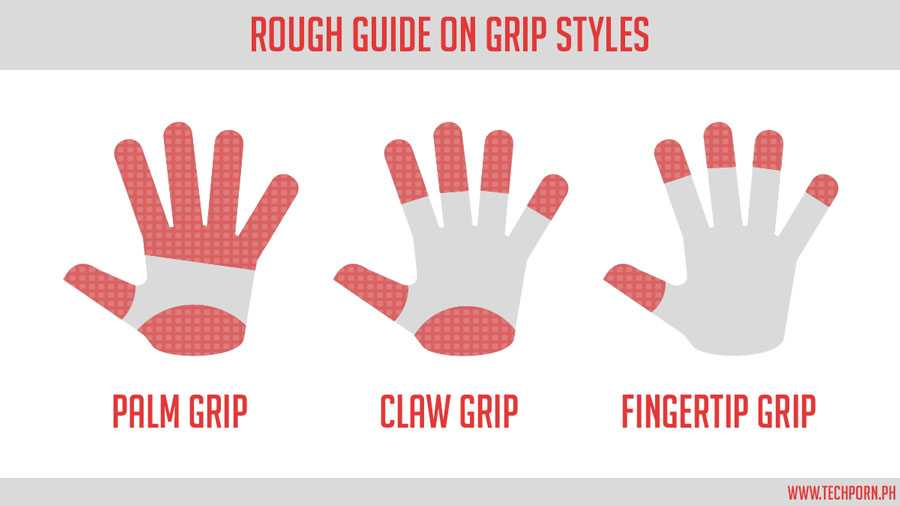
The G.SKILL RIPJAWS MX780 RGB is made for those with small to medium hands, offering great support for claw and fingertip type grips. That said, gamers with similar hand size as mine can easily grab this one without much issue. Now speaking of issues, I somewhat keep on nudging the DPI / profile button accidentally, especially when I slide the mouse to diagonally upward to the right. That action allows my middle finger to extend and click the said button. Doing so puts a little pressure to the larger right side button too.
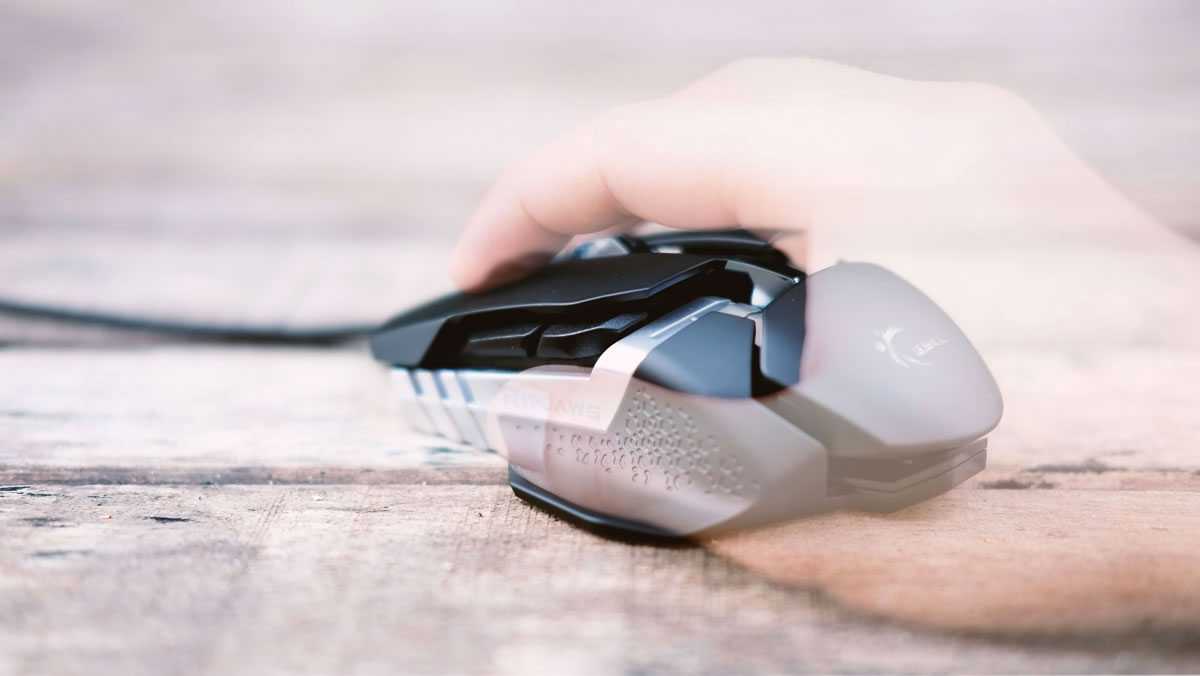
2:1 is considered the best L:W ratio you need to look out for when buying a mouse. Basically, if you want a generally comfortable mouse with good grip, you’d want something near those measurements. For example, the Zowie ZA13 features a roughly 4.5 inch length with a 2 inch grip width – which puts it near to the ratio. The G.SKILL RIPJAWS MX780 RGB on the other hand features a 1.8:1 ratio, with a length at roughly 5 inches and a grip area at around 2.7 inches. That said, the shape is quite near the 2:1 ratio even though it seems out of the norm. I have no problem with its grip and comfort but my issue with the buttons throws me off while gaming.
Design and Features
From its coloring to its design flourishes, the KM780 ($84.99 at Amazon)(Opens in a new window) flaunts an industrial look. It appears distinctly tough, with a brushed aluminum face, a pattern on the detachable wrist rest reminiscent of steel cross-hatching, and metal piping on the top and sides. The aluminum is anodized military-grade plate, so if you should ever need such durability on a keyboard, the KM780 means business. The metal is sleek, though I almost wish there were a version that dropped the piping.
The style adds some chunkiness to the keyboard: It measures 1.8 by 20.3 by 6.7 inches (HWD) without the wrist rest, which adds an extra 2 inches to the depth when attached. That’s all around larger than the more elegant Tesoro Gram Spectrum ($84.99 at Amazon)(Opens in a new window) (1.0 by 17.5 by 5.3 inches), and wider than the already-large Logitech G910 Orion Spectrum ($89.99 at Amazon)(Opens in a new window) (1.4 by 19.8 by 8.2 inches), so it definitely occupies quite a bit of desk real estate. Though it takes up some additional space, the piping along the top does double as a mouse cable holder via a plastic clip in the center.
With all that room, you do get plenty of extra buttons. In addition to the alphanumeric keys and the 10-key pad, there’s a column of six macro keys on the left side, four profile switch keys above them, and a row of media playback keys on the top right. Alongside the media buttons is a volume scroll wheel (similar to the one on the new Razer Blade Pro ($1,299.99 at Amazon)(Opens in a new window) ), which for me is a handier way to quickly change volume than using buttons. To go with it, there’s a neat (though rather pointless) LED grid that lights up from left to right to show volume level. There’s also a USB pass-through on the top edge, which allows you to plug your mouse or other peripherals into the keyboard—this is a feature missing from the Corsair K95.
Similar Products
As for the keys themselves, plenty of features are packed in. The keycaps are concave and the rows are contoured, which makes the keyboard slope along nicely to your hands when the kickstands are up. Our version includes mechanical Cherry MX RGB Brown key switches, but Red and Blue are also available for the same price, and you can get any of them without RGB lighting.
Since our unit does include the RGB keys, the lighting effects were on full display. You can keep the color static and switch between multiple moving effects, such as a slow fade across colors or reactions to each key press. A more unusual setting is «changeling,» which lights up a key when you press it, but then the color gradually changes and fades away. The lighting could be a bit brighter through the keycaps themselves, but it looks good overall. The light splashes down onto the keyboard deck from beneath the keycap, like a car’s neon underbelly onto a dark city street in The Fast and The Furious.
G.SKILL Unified Driver System Software
After downloading the software, starting the install, taking a firmware update, and the completion of the installation, the software opens to this window. In the Customize tab, we are offered a place to create profiles off to the left, and a view of the MX780 with the buttons displayed in the middle. Clicking on one of them brings up a new window seen to the right that offers many preset options to remap the various buttons.
Moving to the Setting tab, we find all of the usual suspects in here. Polling rate adjustment, DPI adjustments with X and Y axis options, and the ability to adjust the double-click speed, pointer speed, scroll speed, and even turn off the preset LOD.
Lighting can be easier than it is in this software, but they still get the job done. Here you can set up the colors for the various lights on an individual basis under background lighting, but you are not done that easy. If you want the rainbow like we had, or want a breathing mode, or to apply solid color settings, you must make a profile for it, then be sure to save it to the device. Otherwise when the software is closed, the work has been undone.
The Macros menus are pretty easy to navigate. Click on the plus off to the left to add a new macro, and you can record time delays, but as we tried setting a few, we found no repeat rate or spam option for them. Also by clicking on the gear symbol, you can import and export Macros from storage from other devices as well.
This is what we were on about with the profiles needing to be created prior to actually being able to set up the LEDs. Clicking on the plus after selecting cycle or breathing allows you to start the profile management. You can select options at the bottom for direction and speed of the LEDs, but the color charts here are pretty much irrelevant. All you need to do here is make the right type of profile, and then go to «Lighting» to configure the lights as we explained before, and again be sure to click on the «save to device» when done. This software does not hold the settings.
Diseño
Se trata de un ratón de diseño industrial de gran belleza. Luce un soberbio negro mate conjugado con un elegante plateado. En la zona de la palma de la mano destaca el logo de la marca mientras que en los laterales se recoge la serie Ripjaws.
Desde arriba observamos 4 de los 8 botones configurables con los que cuenta. Queremos pararnos en la rueda, configurable a nuestro gusto para faciliar el movimiento y traslúcida por los laterales para dejar salir la luz led que esconde. Responde a las mil maravillas y su tacto es muy agradable. Gira con mucha facilidad marcando los pasos de manera silenciosa. Justo detrás de la rueda se encuentra el botón que nos permitirá cambiar el modo de iluminación.
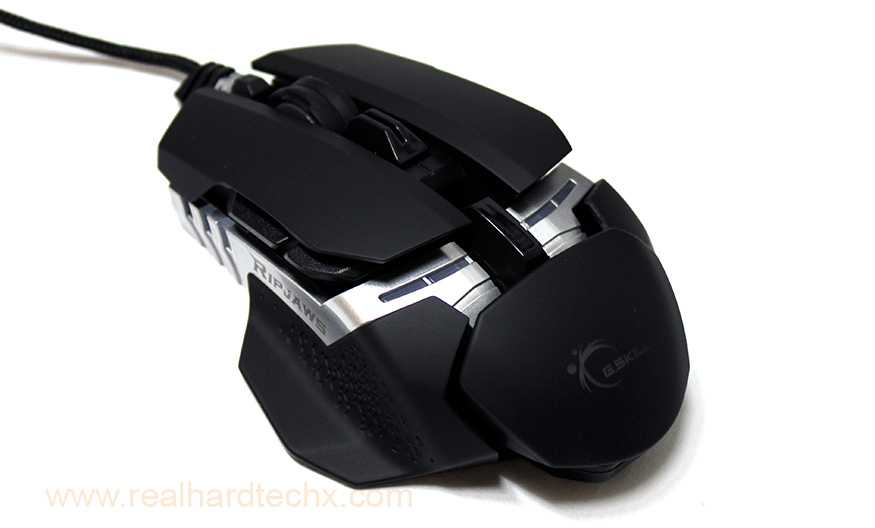
Uno de los aspectos en los que el Ripjaws MX780 destaca es en su comodidad de uso, y es que G.Skill ha cuidado sobremanera el tema ergonómico. El agarre es fenomenal y la sensación de control que ofrece es total. Los dedos se posicionan con mucha naturalidad sobre cada uno de los botones, lo cuales ofrecen un tacto muy agradable. Tened en cuenta que sesiones largas de juego con un ratón mal diseñado ergonómicamente os va a dejar la mano para el arrastre.
En el lado izquierdo el MX780 RGB con dos botones configurables más que se suman a los 4 anteriores.
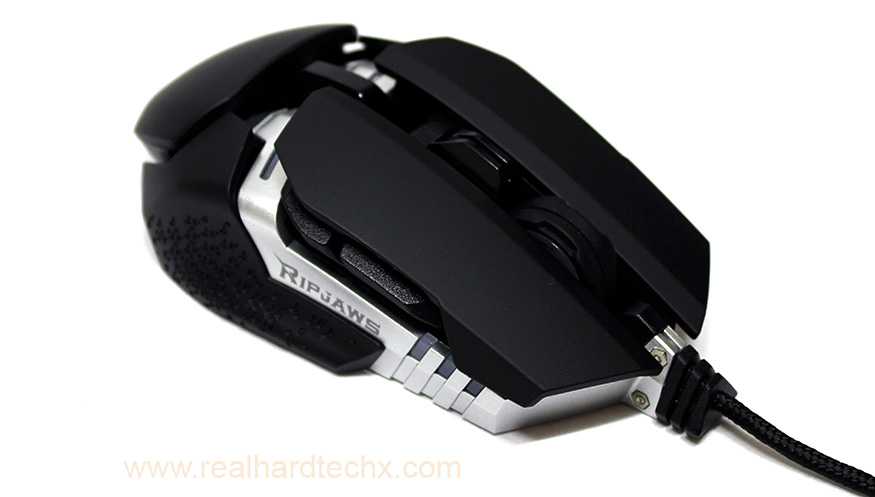
Sus dimensiones son redicidas, llegando hasta los 93 cm de ancho debido a los estupendos asideros laterales con los que cuenta. El agarre que ofrecen es realmente bueno.
En el lado derecho hay otros dos botones configurables y una zona de leds, también configurables totalmente (también la hay al otro lado).
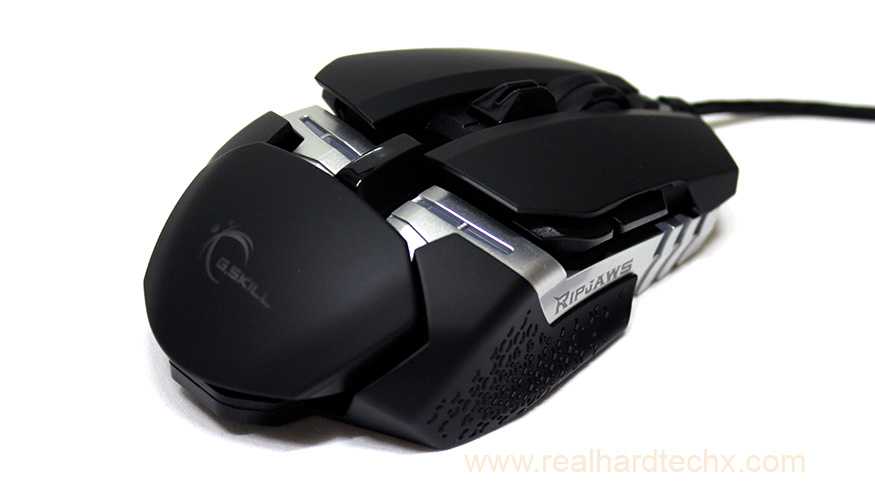
Se mire por donde se mire, el G.Skill Ripjaws MX780 RGB es una obra de arte. Mención a parte merece la capacidad de regular en altura la zona de la palma de manera que la dejemos a nuestro gusto.

Dentro de las 4 zonas RGB configurables tenemos la que se encuentra en la zona de arriba. El límite es nuestra imaginación. El gran software que acompaña al Ripjaws MX780 RGB convierte el proceso en un juego de niños.
Las 20 millones de pulsaciones que garantizan los Omron aseguran ratón para años y años.
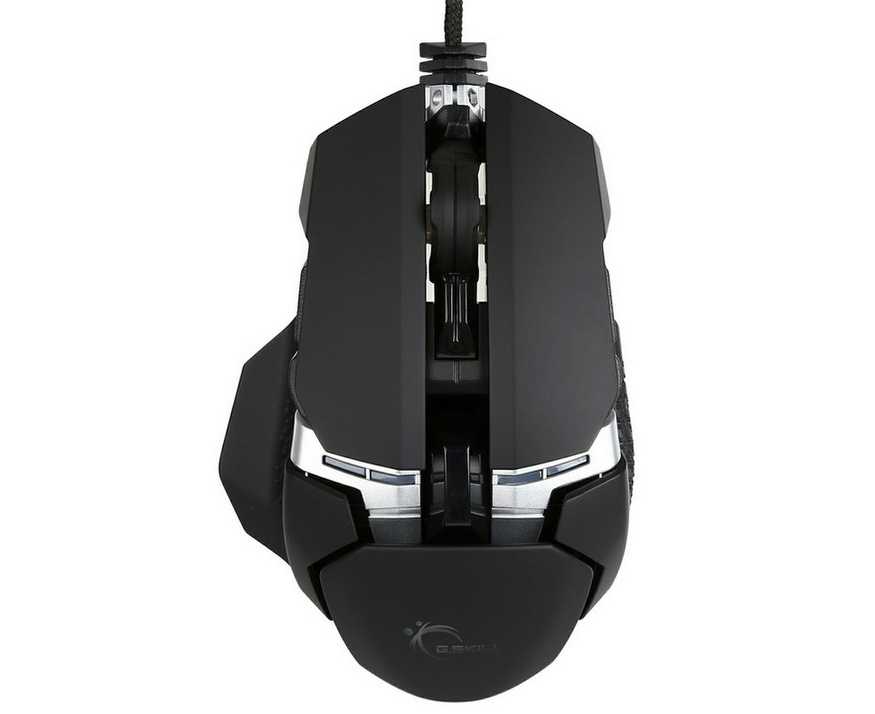
G.Skill ha querido que este sea un ratón para ambidientros real. Para ello se incluyen un par de asideros que se sustituyen de manera sencilla e intuitiva. Sólamente hemos de tirar hacia afuera los que están colocados mediante imanes y colocar los otros empujando hacia adentro.
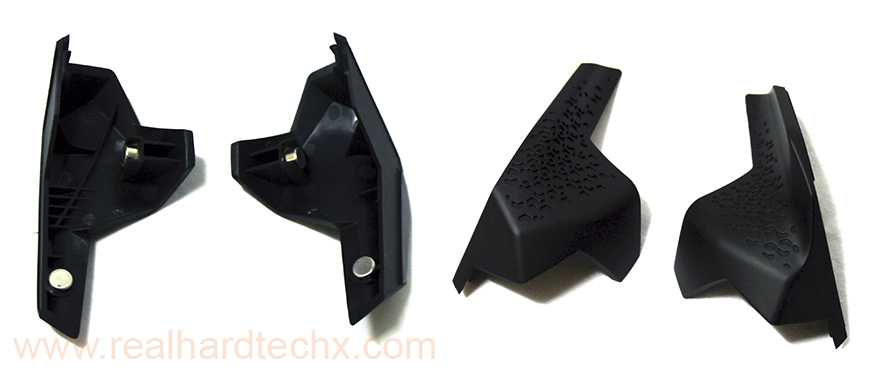
En la siguiente imagen se muestra de manera muy visual esto que os queremos explicar.

Para potenciar aún más la capacidad de personalización por parte del gamer, G.Skill ofrece la posibilidad de ajustar el peso del ratón en 4.5 + 4.5 g mediante dos pesas que se colocan una a cada lado del ratón.
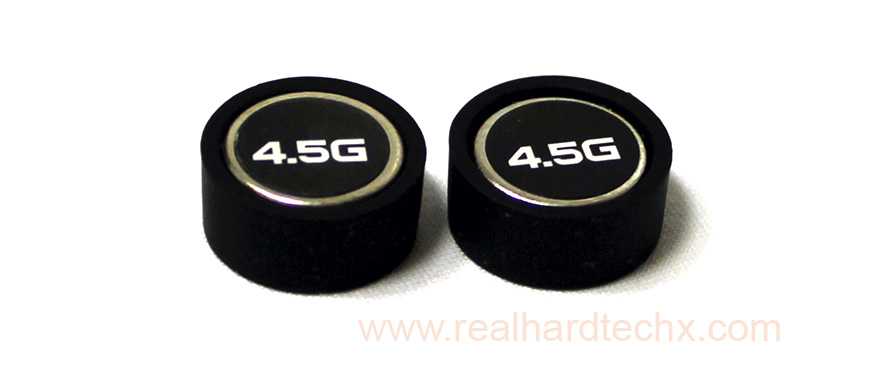
Colocarlas es muy sencillo. Retiramos el asidero e introducimos la pesa en el orificio circular que presenta el ratón en la parte central del lateral.

Así es como queda una vez instalada. Ya solo resta volver a colocar el asidero.
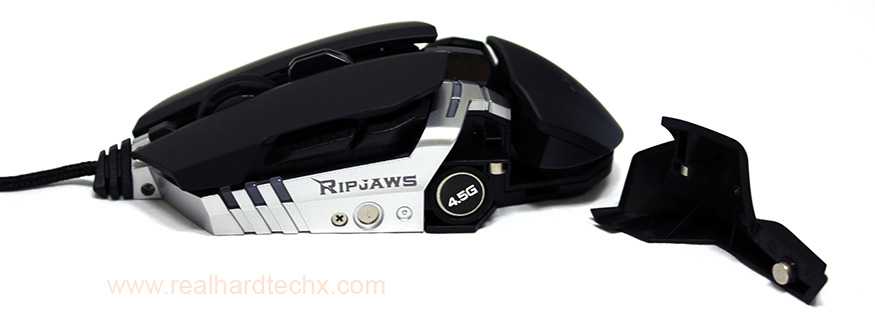
G.Skill ha colocado cuatro pies de polietilentereftalato para favorever el desplazamiento del ratón sobre cualquier tipo de superficie.
Equipado con el espectacular sensor láser Avago ADNS-9800 capaz de llegar hasta los 8,200 dpi y con tasa de sondeo de 1.000 Hz, te permitirán dominar las sesiones de juego, ya que la rapidez y control de alta precisión que proporciona este sensor es el sueño de todo gamer.
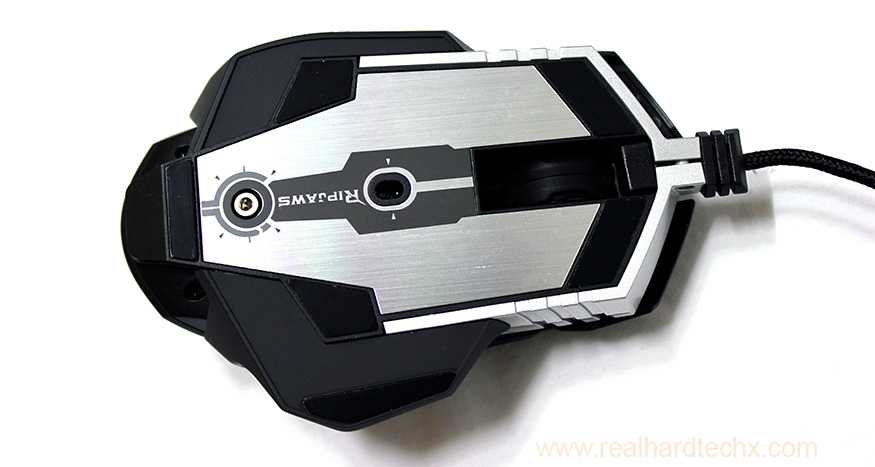
Mediante la llave metálica que os hemos mostrado antes es posible regular la altura del reposamanos intrroduciéndola en el orificio metálico de la base situado tras el sensor.
El cable, con nada menos que 1.8 m, nos proporciona una libertad de movimientos excelente. El trabajo de trenzado está hecho con sumo cuidado transmitiendo durabilidad y garantizando que los nudos no van a ser problema alguno.
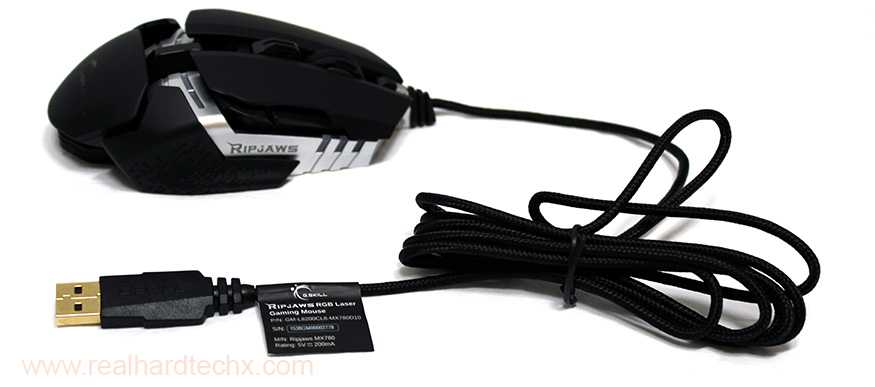
El conector USB, chapado en oro, pone la guida a un diseño digno del mejor high-end informático.
Performance and Software
The Brown switches provide fast double-tap response (the actuation distance is 2mm) during gameplay and a fine feel for typing. It’s a satisfying keyboard to type on through the day, as it doesn’t require much force but still provides aural and tactile feedback, though the keys are a lighter touch than I prefer. The KM780 includes full N-key rollover and 100 percent anti-ghosting to prevent input jams during intense gameplay. The keys are rated for 50 million strokes, but needless to say, I didn’t quite get around to testing that many.
G.Skill’s free software, which lets you customize the lighting and key functions, is largely competent. It’s not slow or prone to freezes like Tesoro’s, but also not as streamlined as Razer’s. Everything can be managed from within a few tabs, though becoming acquainted with setting locations takes some time. For instance, finding where to switch between preset lighting effects was surprisingly difficult—it was easier to find where to change the settings for those effects, which seems backward to me.
Macros are a bit confusing as well, since the functions of each button and menu aren’t entirely clear—you’ll figure it after tinkering if you have experience with this kind of software, but I imagine first-timers will need some tutorial help. Profile modes one through three correspond to the M1, M2, and M3 buttons on the top left of the keyboard, and as with the macros, it takes some trial and error to figure out what you’re doing. Beyond macros and changing specific key functions—very straightforward thanks to an interactive keyboard diagram—you can also tweak basic things like polling rate, rollover style (N- or six-key), action delay, and sleep settings for effects.
ConclusionThe G.Skill Ripjaws KM780 RGB is well built and a breeze to type on, with extras like customizable lighting, media playback buttons, and setting profiles to justify its place in the high price tier. It’s a bit bulky, and the design is not going to be everyone’s cup of tea. If its aesthetics do speak to you, I can’t imagine walking away disappointed with its performance or feature set. That said, some similarly priced keyboards, like the Corsair K95 RGB and the Logitech G910 Orion Spectrum, have a bit more general appeal and might better fit what you’re looking for in a keyboard this expensive.
G.Skill Ripjaws KM780 RGB
3.5
(Opens in a new window)
Check Stock
$84.99 at Amazon
(Opens in a new window)
MSRP $169.99
Pros
- Well-built aluminum chassis.
- Customizable keys and lighting.
- Premium Cherry MX key switches.
- Dedicated macro keys.
- Media playback buttons and USB pass-through.
View More
Cons
- Big footprint.
- Industrial design may not be for everyone.
The Bottom Line
The G.Skill Ripjaws KM780 RGB is a solid if unspectacular mechanical gaming keyboard with a bevy of useful features and fun extras.
Like What You’re Reading?
Sign up for Lab Report to get the latest reviews and top product advice delivered right to your inbox.
This newsletter may contain advertising, deals, or affiliate links. Subscribing to a newsletter indicates your consent to our Terms of Use and Privacy Policy. You may unsubscribe from the newsletters at any time.
Thanks for signing up!
Your subscription has been confirmed. Keep an eye on your inbox!
Sign up for other newsletters
Packaging, Accessories, and Documentation
The left of the package is taken up with the G.SKILL and Ripjaws MX780 naming on what appears to be a memory heat spreader. To the right we find the LEDs are full RGB, we see a large image of the mouse, and at the bottom, the DPI and sensor, the custom RGB lighting, the eight buttons, and its ambidextrous and height adjustable design.
The front does open on this package and exposes a panel on the left showing both sets of side grips with the MX780, and at the bottom covers features, shows where the weights go, and also shows how the heel raises. Off to the right, we get a view of the MX780 and the goodies that come with it.
The right side of this box keeps things fairly simple with a solid black panel used to highlight the red and white text for the company and product naming.
On the back, the LEDs on the MX780 have been changed, while off to the left of it there are seven features listed. The fine print at the bottom lists the adjustable height heel, the side grips, the eight buttons, and the ambidexterity.
This smaller side of the box, rather than to copy the other side, this time we have a view of the MX780 along with smaller text, and to the right they even added the web address.
Protecting the mouse and its bits from damages and keeping them from moving around, they chose this shell over a shell design. It works tremendously well as the sides take any impacts, and just like ours did, allows the MX780 to arrive unmolested.
Under the plastic, there is some paperwork to locate. To the left is the quick start guide, and its job is to get the MX780 connected to the PC, briefly go over its features, and then point you to where to get the driver and software download. The warranty guide informs you of what is covered in the two years they offer with this device.
In the back, we have the pair of magnetic side grips that turn what is shipped as a right-hand mouse into a left-hand mouse. In simpler terms, it reverses the larger thumb grip and the smaller finger grips with those sent on the MX780. We also see the pair of 4.5-gram weights in their rubber sleeves, and we also get a hex driver to work the hell positioning.
Both the set on the MX780 as well as this optional left-hand set are held onto the mouse with a pair of very strong magnets for their size. They are also designed to sit low on the sides, so that when you grip it to lift the MX780, the pressure is not on the magnets.
The Ripjaws MX780 Comfort
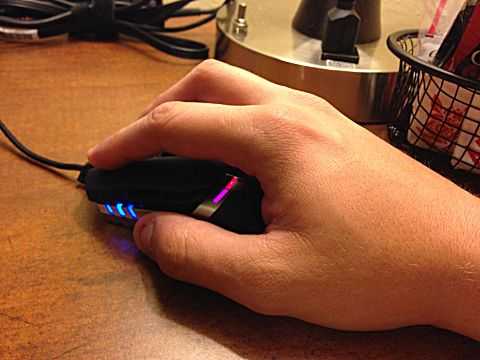
As I mentioned earlier, I have large-ish hands. This mouse is plenty big enough though — especially after adjusting the height a bit. I found that helps a lot with comfort.
I also like the adjustable side grips (now that I know how to use them). One set has a wider bottom, which is especially nice because it lets my thumb and pinky fingers rest on the mouse. Most of the time they are just dragging on the table, which I’d never realized until this mouse gave an alternative.
The main comfort issue with me is using the right shoulder buttons. I use mice with my right hand, so my thumb can reach the left shoulders just fine. But clicking the ones on the right is a bit tricky and will take some practice — if I decide to use them at all.
Also being able to adjust the weight of the mouse is nice. I’ve never thought about a mouse’s weight much before, but I felt like the mouse was a little too light without those additional weights, so it was nice to have that option.
In terms of materials, the plastic that makes up most of the mouse feels okay. I kinda like the more polished, smoother plastic of my Logitech M510, but I’m not really gonna be paying much attention to it when I’m sending waves of skeletons toward baddies in Diablo 2.
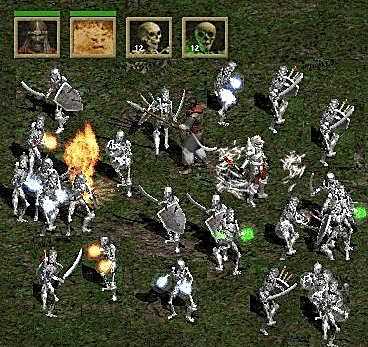
…yes, I just started replaying that 16 year old game.
Real world Performance
Stepping away from MS Paint, DPI settings and testing, we can now see how the Ripjaws MX780 performs in 2 different environments. Gaming and general use. Then, see what we think of the cosmetically pleasing, RGB that is on offer with this peripheral.
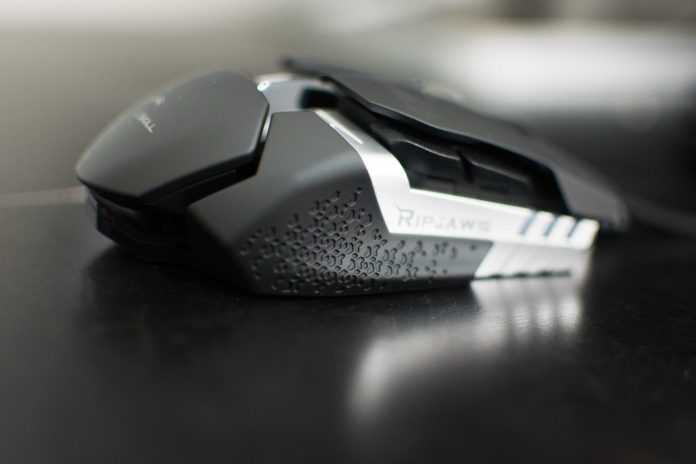
Gaming
Let’s face it, this mouse is designed for gamers as stated on the box so how does it perform? Well, we took the MX780 through a few different games to see how it coped and the results were very good! First/third person shooters were a breeze, allowing me to take the advantage with DPI options to play with in different environments just a click away. Full on action in close quarters at 3200 dpi to allow for quick manoeuvring, and switching to 800 dpi for long distance shots so I was able to keep steady while taking out an enemy. MMORPG’s and strategy games were also easy to play with as the MX780 offers a variety of macro programmable buttons so shortcuts were assigned to each button promptly before playing. Having the ability to use those additional buttons for things such as healing or casting meant that I could keep on my toes when in the midst of battle. We set up the mouse with 4 main assignable keys, the left and right forward/back buttons commonly used for web page viewing. Once set, we could use the mouse to its potential and work our way through levels of strategic games without needing to use a wide area of the keyboard for assigned controls.
General Use
Most mice on the market are suitable for general use and day to day tasks, but it’s the comfort and usability that makes some mice excel over others. The MX780 is not only a very comfortable mouse designed for adjustment but offers 2 additional thumb buttons that double up as a “Next” and “Previous” web page button so internet based tasks are easier and less effort is required to travel between visited web pages. Please note that on the opposite side, you will find a mirror of this and they work just the same. A click of the mouse scroll wheel will allow you to easily move around web pages in any direction so again it’s much more easy to navigate online sources. As everyday tasks go, you will always find yourself swapping between software and the ability to change your DPI settings helps greatly as some, like myself, prefer different sensitivities on different pieces of software. One click of a button and this action can be done, making the transition of sensitivity between programs a breeze.
RGB
As previously mentioned in our software overview section of this review, the MX780 supports 16 million colours RGB wise and can easily be adjusted with the application provided to suit your needs or desires. We settled with a nice red on black finish, just to reflect one of the most common colour pallets on the market, to see how easy it was to set and how it looked.
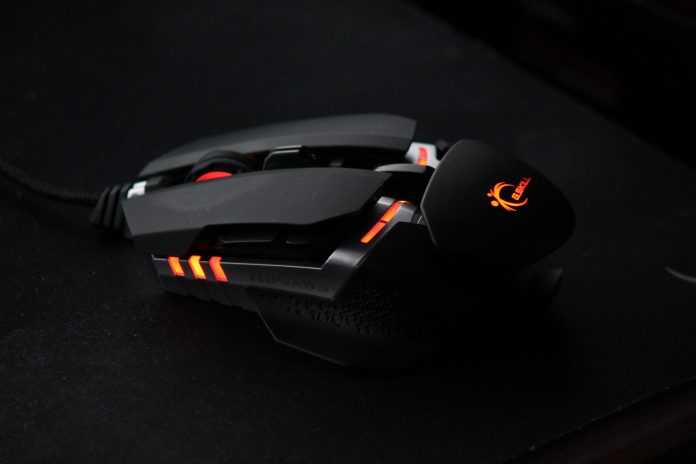
As you can see, not only does it look good it is also very easy to set up. We did vary the colour, affect and change the configuration to light different parts different colours but overall found the experience to be much easier than most when it comes to getting your mouse to look how you like.
Performance and Testing
Since unboxing the device, we have put the Ripjaws MX780 through some vigorous abuse and testing to see how it performs. From gaming rages to general performance testing, we threw a lot at this mouse to see how it tested under serious pressure. So, how did it do?
Paint Jitter Test
To start, we will be testing performance with the good old fashioned Paint Jitter test on five of the main default DPI settings, although the DPI is completely customisable so this will give you a flavour of what to expect. To portray how much jitter each setting has, the best method is to draw a series of lines and circles in MS paint.
800 DPI (X – 800 Y – 800)
At this setting, everything seemed to flow smoothly. Accuracy was high and movements were a little obscure, visible by the struggle to keep lines straight.
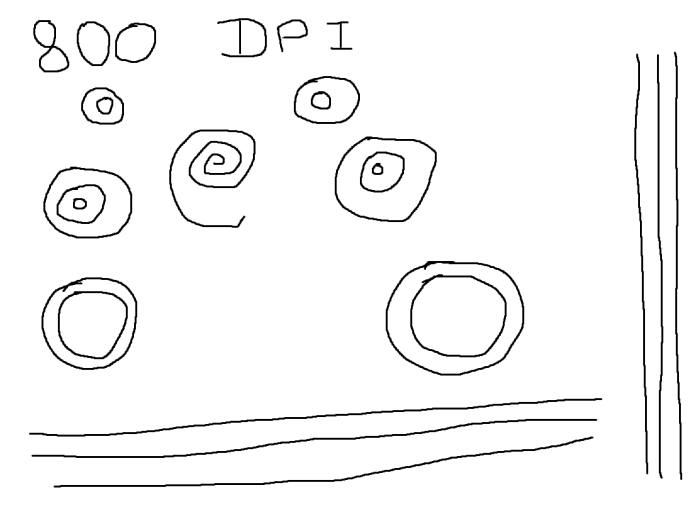
1600 DPI (X – 1600 Y – 1600)
At this DPI, we can see it become a little more complicated to draw circles in one swish motion yet was still manageable with minimal stress.
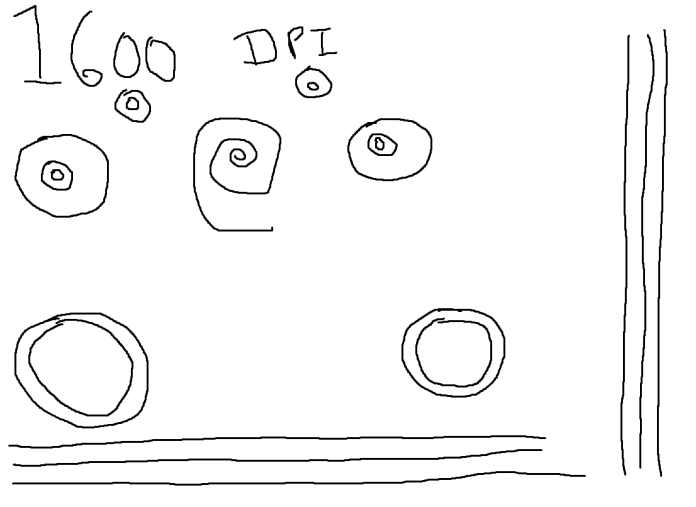
2400 DPI (X – 2400 Y – 2400)
At this DPI, we slowly see the decline of accuracy when using the mouse. This could be put down to my own personal preference begin slightly lower than this but overall, the test does show the beginning of my struggle to draw at this DPI.
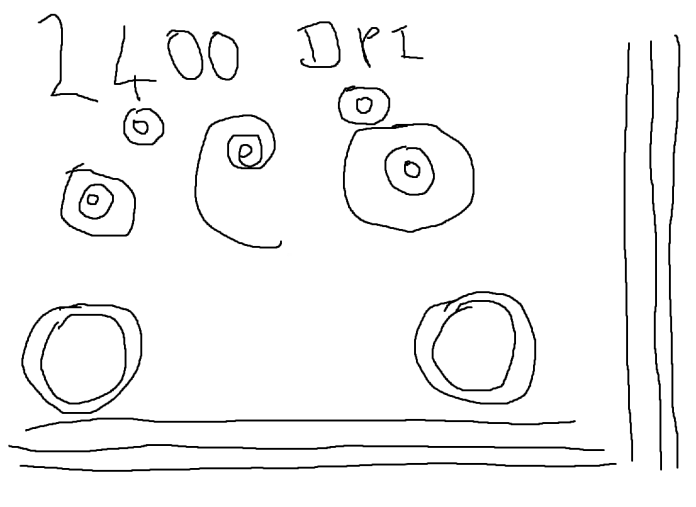
4800 DPI (X – 4800 Y – 4800)
Things start to become difficult at this DPI, with every little movement being the difference between a circle and mess of wiggly lines. Lines are a little straighter as of the quick motion capable with one quick movement vertically or horizontally.
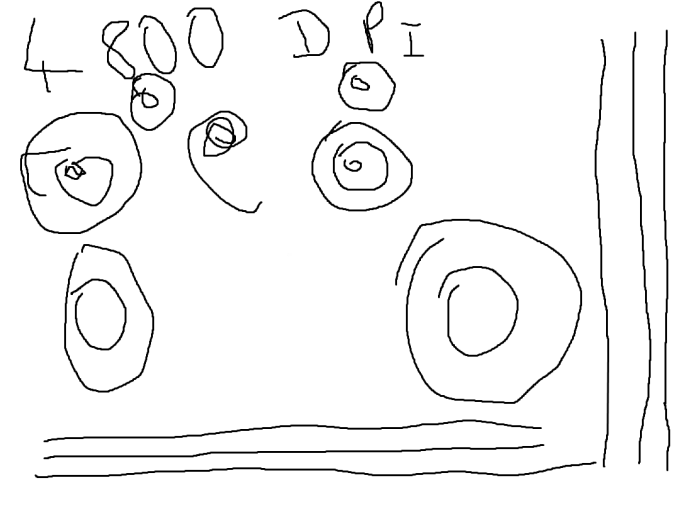
8200 DPI (X – 8200 Y – 8200)
At 8200 DPI, the struggle is beyond real as drawings become a mess and struggle to contain the beast in my hand. This is certainly NOT an optimum DPI to be using for accurate drawing or creative productivity.
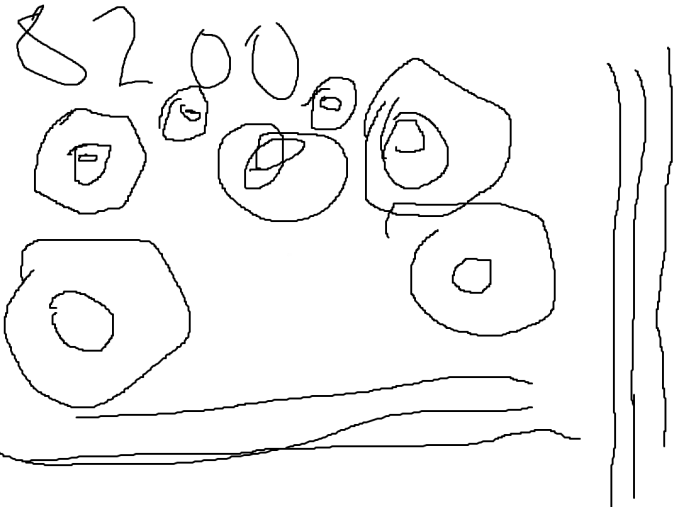
Optimum DPI and usability testing
In a controlled environment, we ran the mouse through many tests to see how well the mouse performed and this assisted with finding the optimum DPI for myself. There are plenty available to help you select what DPI combines sensitivity with accuracy by statistically factoring in the way you use a mouse with the available DPI platforms on offer by said peripheral, in this case, a full spectrum of X and Y axis DPI adaptability. We are sure that by completing said tests you will be able to find something suitable for each and every user.
Surface Compatibility
Some surfaces offer a better and much clearer platform for use of optical sensor mice, which can and cannot benefit you. For example, some surfaces that offer a variety of large, small, long and thin fibres will cause confusion for the sensor to read movement with, just like using a mouse on a carpet. Whereas, use of a mouse on a professional gaming surface or good quality mouse mat which offers a very stable selection of fibres will allow the mouse to read whatever it glides over. We covered a variety of surfaces that the MX780 could be used on, nothing too over the top just low to high-end mouse mats, and all seemed to work well with the peripheral. No issues occurred or irregular activity took place so we are happy with said results.
Software
Available through the G.SKILL website, software can be downloaded to assist with the configuration of the mouse and to add a little personal touch wherever you like. The download page can be found here. The software is very basic with an extent of features to allow for setting up the MX780 with pinpoint perfection to meet everyone’s personal taste.
The software is divided into two main sections, “Macros” and “Lighting Profiles”. Let’s take a little look at just some of the features available to let us play with the mouse to suit our needs, in this case, we will be setting the mouse up for gaming as it is the intended purpose after all.
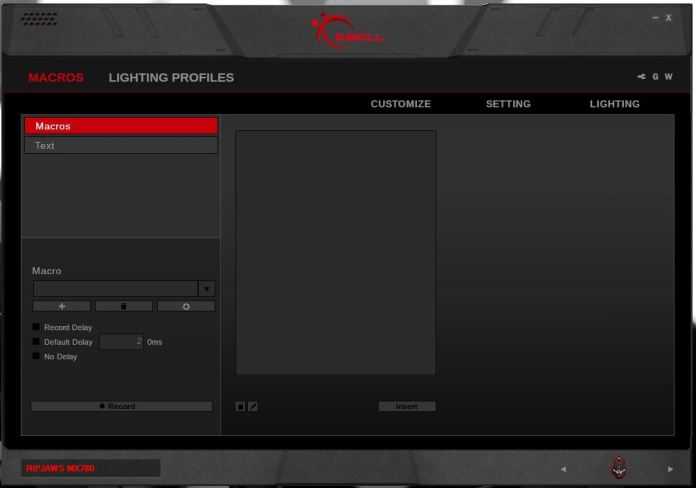
Under the “Macros” tab, we will find two subsections that allow for Macro configuration and text configuration. Nestled away here, the options for listing, creation, editing and duration are present. Whatever you need to do, macro wise, be sure this software will allow it and better yet, in a very easy fashion.
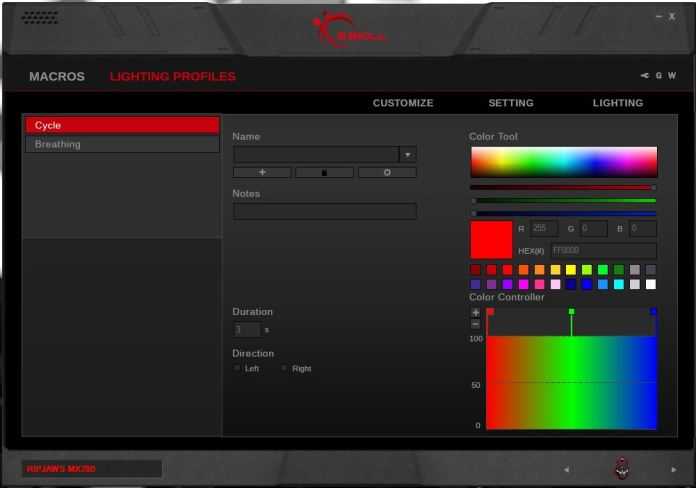
Under the “Lighting Profiles” tab, we see further detailing for the custom RGB capabilities that the MX780 has and they are vastly extent. Cycle and breathable options are amongst the features capable, with profiles that can be set up to suit your needs and help make your mouse look cool alongside your PC.
Now, we did play around in both these sections of the software but took to it very lightly and focused our attention on the 3 options to the top right of the software which gave us most fun out of the creative spark we felt.
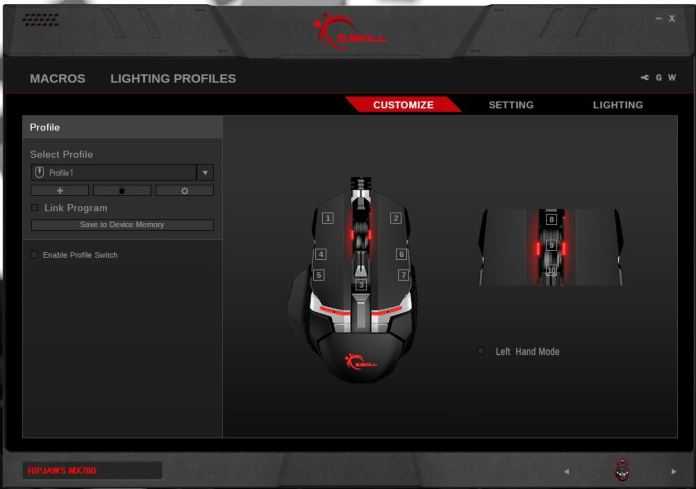
“Customize” allows users to focus on their profiles and tweak them to suit the needs of the user. 5 profiles can be set up at once and toggling the “DPI” button will allow you to select what one is in use. Here we can change the controls of each aspect of the mouse, from left and right mouse button controls to that the spare 4 buttons can be used for. Very handy for those of you who play a lot of different games in one long sit in, like myself, where changing DPI needs to be quick and easy.
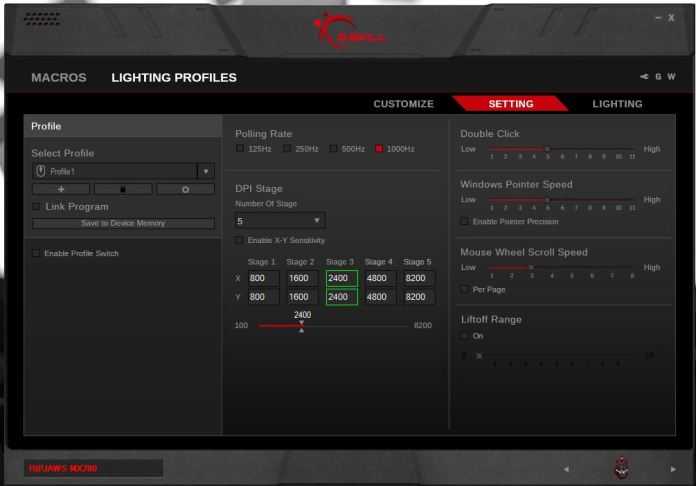
“Setting” allows you to make DPI settings, capabilities of things like “Double Click” and “Windows pointer” speeds as well as the polling rate of the mouse for those of you who like to get technical. Whatever the detail, the G.SKILL software allows you to do it.
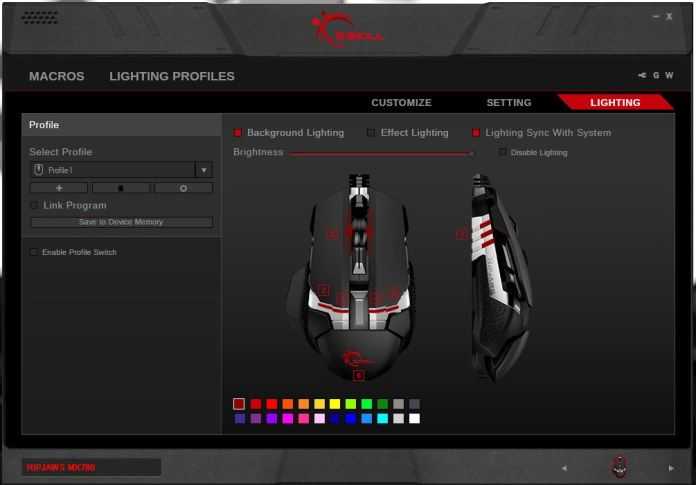
“Lighting” allows you to make custom adjustments to the lighting of each profile, from what colour to the way is its display and even where on the mouse. Want red and green? The option is there. Want to mix and match each section of the mouse to mean something for quick reference? Do it! You have a nice palette of colours to play with and plenty of areas to adjust.
Overall, we enjoyed the play time we had with this software and the friendly usability was a welcoming sight compared to the interfaces we have used in the past for some “reputable” companies so good job G.SKILL
Closer Look
Now we can begin to take our first look at the Ripjaws MX780 in a little more detail and see what the general aesthetics of this product are like.
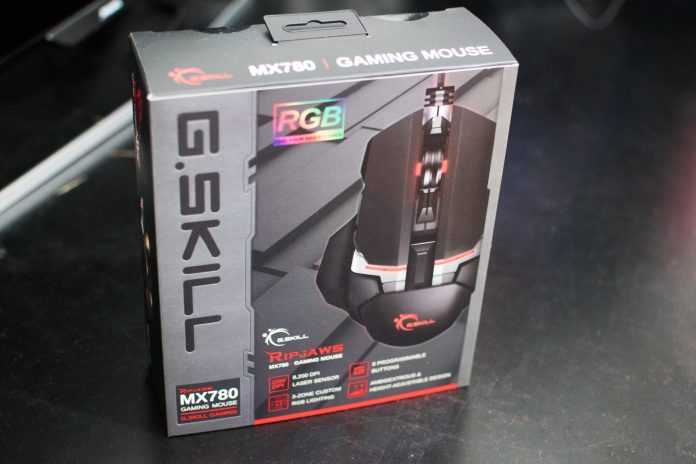
The front of the box displays your typical G.SKILL style finish, very metallic and futuristic. Featuring all the relevant product names and branding, we can also see a detailed render image of the mouse and some selling points a little lower down.
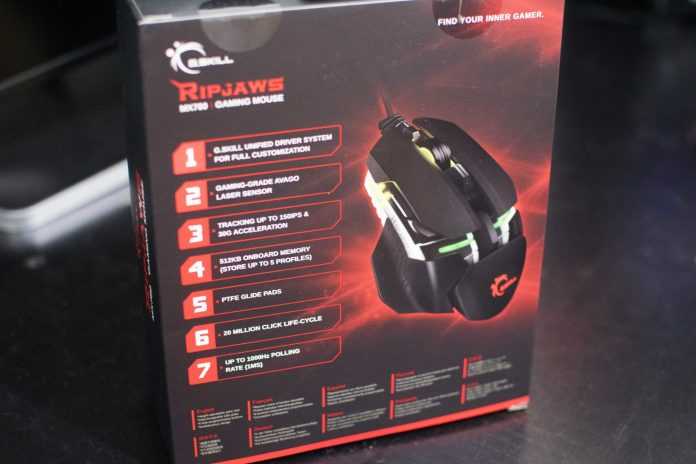
The rear of the box mainly covers the selling features in a little more details to let you know exactly what to expect when you purchase this item.
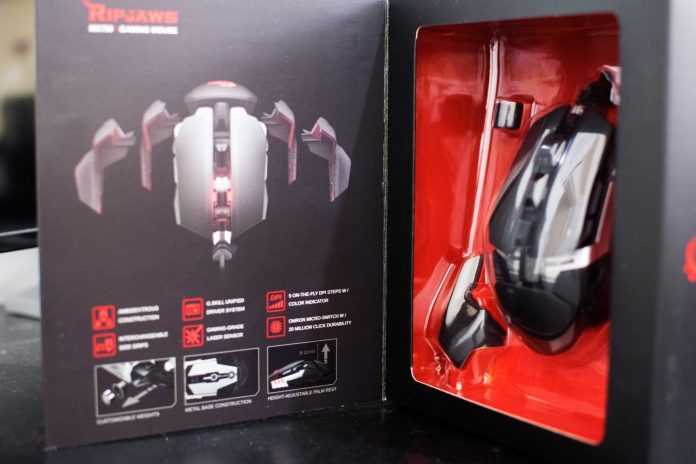
The inside cover of the box allows for an expanded view of the mouse and the adjustment options available to you as well as an open box design that lets you see the mouse and some of its accessories.
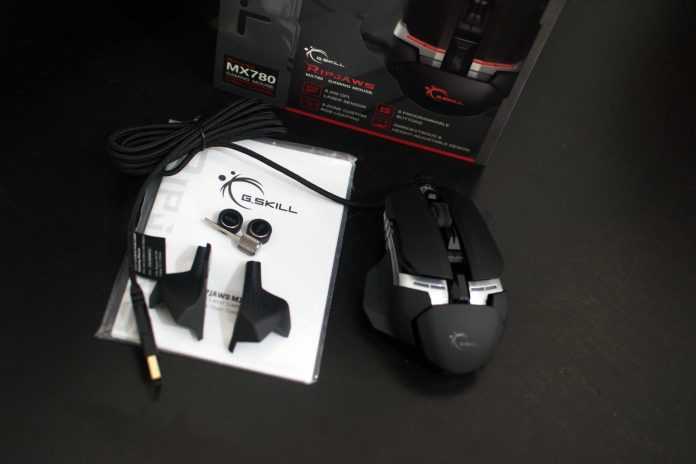
Inside the box, we have the usual paperwork, featuring warranty and general purchase documents, as well as the mouse, weights, adjustment tool and additional thumb/pinkie rests. These can be seen a little better in the below image.
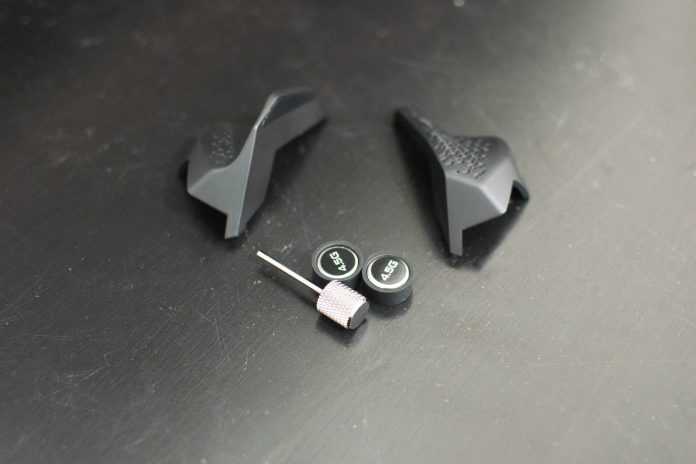
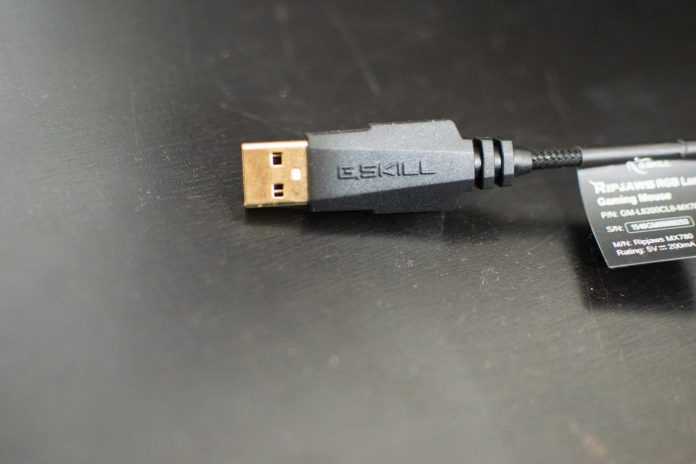
On the end of the braided cable of the mouse we have a gold plated USB connector.
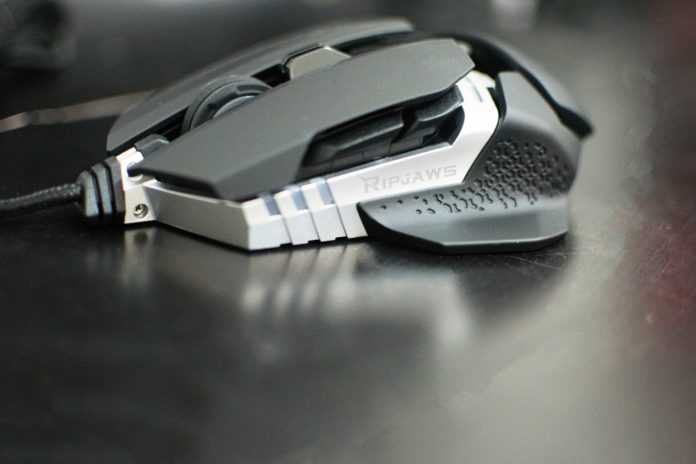
Finally, we have the Ripsaw MX780 in all its glory.
Get your back up
Let’s get the basics out of the way. The MX780 is an eight-button ambidextrous mouse: The standard Left, Middle, and Right Click, a DPI switch behind the scroll wheel, two thumb buttons on the left and two thumb buttons on the right.
We can run down the standard checklist here: 1,000 Hz polling rate, braided fabric cable sheathe, 512 KB onboard memory for profile storage, and an 8,200 DPI sensor. Topping out at 8,200 DPI, the MX780 doesn’t quite match the lofty (ridiculous) numbers being thrown around by some of its competitors, but for most people it’ll be plenty.
The build quality also deserves a call-out—much of the MX780 is built from aluminum, and it’s both durable and gorgeous to look at. Given that most of the mice I use are entirely shrouded in plastic and rubber, the MX780 feels like a huge step up in terms of quality. It screams “Premium Mouse” even though it’s not more expensive than the competition.
And the four-zone RGB lighting is as well-implemented as anything by Razer or Logitech. Just make sure you download G.Skill’s software and change the color, because the default is a ghastly salmon color.
Let’s get into the cool stuff, though—namely, the fact the MX780 is pretty much “G.Skill’s less black-and-green version of the Razer Ouroboros.” Or, if you prefer, it’s an ambidextrous version of Logitech’s G502 Proteus Core. Which is about the highest compliment I could give.
Listen, I love customization. I don’t think it’s essential every mouse manufacturer start enabling all sorts of tweaking and tinkering, but I appreciate it when they do. Why? Because it’s unlikely you’ll ever find a mouse you think is perfect straight out of the box. The more options you give me, the more likely it is I can make your mouse work.
The MX780 gives you quite a few options. As I mentioned, this is an ambidextrous mouse, so there are thumb channels along both sides. These channels are held on with magnets, and can be swapped out for more/less textured versions with wider/narrower footprints.
Remove the trays and you can also slot 4.5 gram weights into each side—a nice touch, though it tends to make the mouse a bit heavy in the back (or to one side) instead of the G502’s more equal distribution of weight. And even with both weights inserted, the mouse wasn’t as heavy as I’d like.
Flip the mouse over and you’ll find a hex key you can turn to adjust the height of the palm rest. Used to palm-gripping? You’ll probably want to push it a bit higher. Claw gripper? Keep it low so you don’t have to bend your fingers quite as much.
The MX780 doesn’t quite match the versatility or comfort of the G502, but it’s damned close—especially for an ambidextrous mouse. And I think I like the feel of it just a bit more than the Ouroboros.
Embalaje
El mimo con el que G.Skill trata sus productos comienza en el excelente embajaje que la marca utiliza. Diseños muy cuidados, elegantes y agresivos, repletos de información… G.Skill sabe cómo llamar la atención del usuario avanzado.
En esta caja G.Skill combina el negro, el rojo y el plateado con maestría.
En la portada, además de la foto del Ripjaws MX780, G.Skill ha destacado los 8200DPI del sensor laser ajustable, los 8 botones totalmente programables, las 4 zonas de retroiluminación programables y los asideros laterales intercambiables y la pieza de la palma regulable en altura.
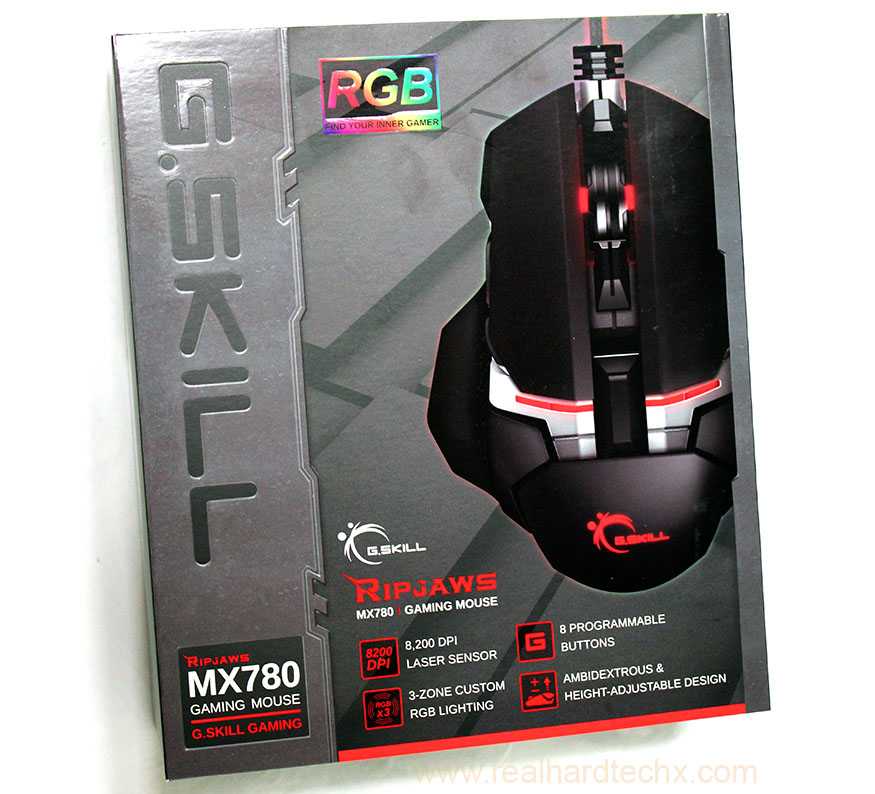
En el lateral G.Skill nos presenta el nombre del modelo y nos muestra una imagen del Ripjaws MX780 en funcionamiento.
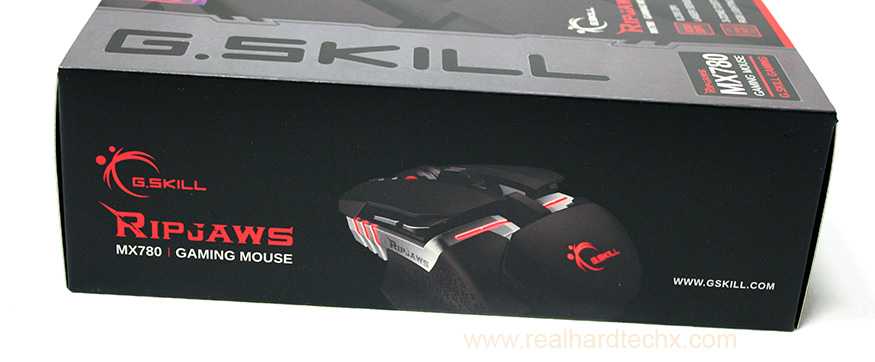
En la base G.Skill recoge los requisitos del sistema y el contenido del paquete.
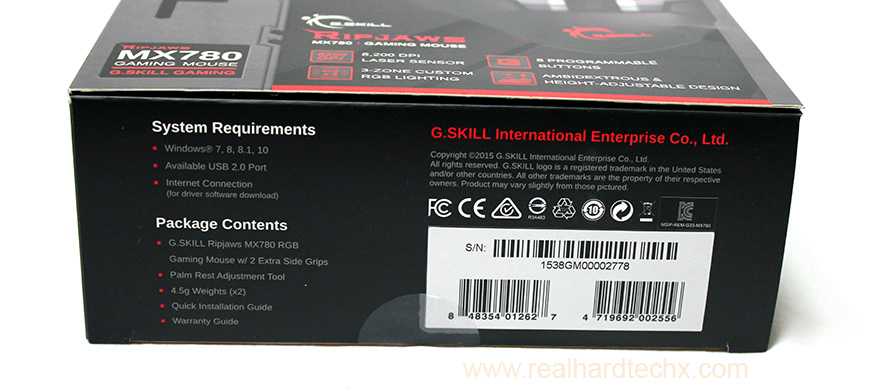
En la cara posterior de la caja, G.Skill lista las especificaciones y características principales. Entre ellas destaca el fabuloso sensor ABAGO ADNS-9800, su ergonómico diseño para ambidiestros, depurado driver y completísimo software que permite exprimir al máximo las potencialidades del ratón programando las teclas y almacenándo las macros en los 512 kb de memoria interna, apoyos de la base de polietilentereftalato, velocidad de seguimiento de hasta 150 IPS y aceleración máxima de 30G, esperanza de vida estimada de 20 millones de clicks y un tiempo de respuesta 1000Hz / 1ms.
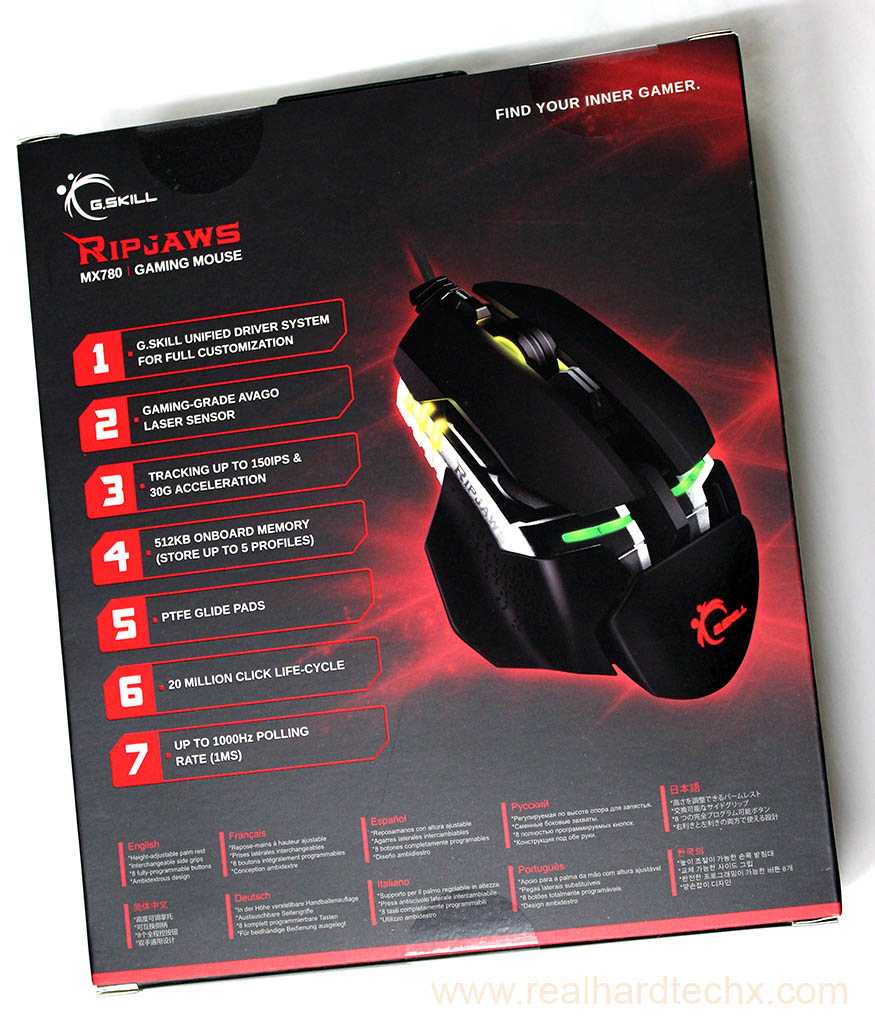
La caja presenta una apertura tipo libro que G.Skill ha aprovechado para, en una de las hojas, entrar más en detalle sobre las características que presenta el Ripjaws MX780, guardando la otra página para abrir una gran ventana por la que se contemplamos el ratón y sus complementos sobre fondo rojo sangre.
La sensación de calidad global de producto que transmite esta presentación es inmejorable. Gran trabajo de marketing.
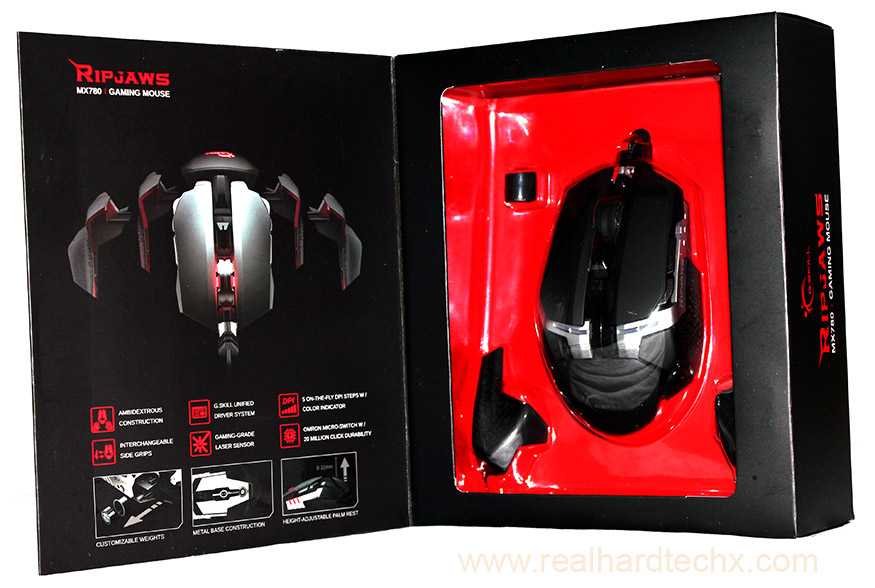
Abrimos la caja y encontramos al Ripjaws MX780 y sus complementos enclaustrados en el plástico rojo de la carcasa.
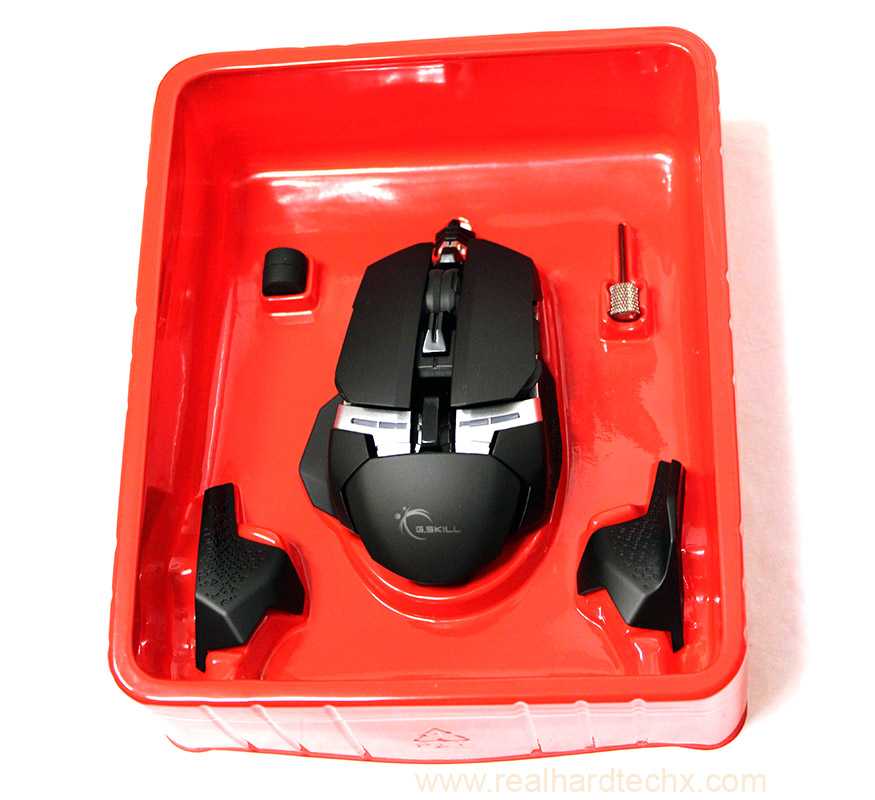
Demos un repaso general a lo que G.Skill incluye en el pack:

- Ratón Ripjaws MX780 RGB
- 2 pesas de 4.5 g
- 2 asideros laterales intercambiables para zurdos
- Herramienta para el ajuste en altura de la zona de la palma de la mano
- Guía de instalación rápida
Demos, seguidamente un repaso a las especificaciones del Ripjaws MX780 RGB.






























